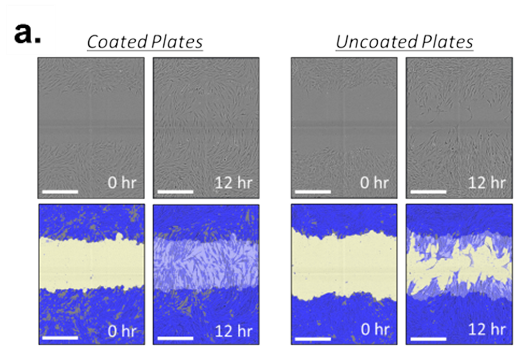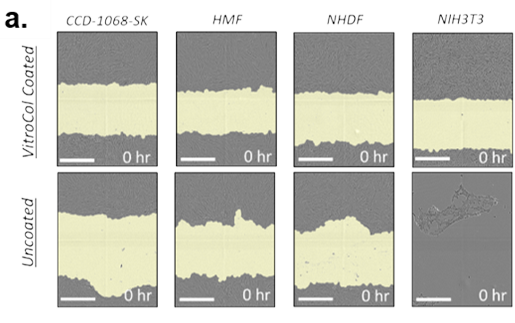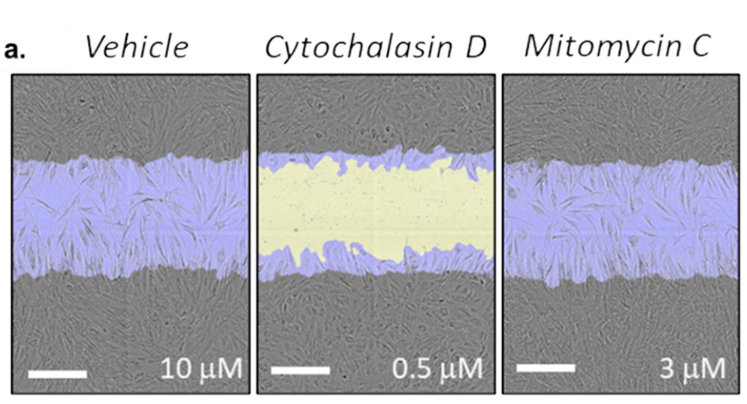Matrigel Alternatives for Migration and Wound Healing
02/14/25
Fibroblast Migration and Wound Healing
Fibroblast migration is critical in wound healing. This study demonstrates the superior performance of Advanced BioMatrix’s xeno-free extracellular matrix (ECM) coatings in promoting fibroblast migration using the Scratch Wound Assay.
The xeno-free coatings showed faster migration and consistent wound closure compared to uncoated plates and Matrigel®, offering a physiologically relevant and reproducible platform for migration assays.

Wound Healing Across Multiple Lines of Fibroblasts
Fibroblast migration is essential for wound healing. This study demonstrates that Advanced BioMatrix’s xeno-free VitroCol® Collagen I solution enhances fibroblast migration and wound closure across multiple fibroblast lines, including NHDFs, CCD-1068-SK, HMFs, and NIH-3T3, using the Scratch Wound Assay.
Compared to uncoated plates, VitroCol® provides a stable and uniform surface, supporting cell attachment and consistent migration, particularly for NIH-3T3 cells, which failed to adhere to uncoated plates. These results confirm VitroCol® as a biologically relevant, xeno-free alternative to traditional ECM coatings, improving the reproducibility of wound healing assays.

Chemotaxis Migration of Human Fibroblasts
Chemotaxis is crucial for wound healing, guiding fibroblasts to injury sites in response to biochemical signals. This study demonstrates that Advanced BioMatrix’s xeno-free VitroCol® Collagen I solution enhances fibroblast migration and chemotaxis in response to fetal bovine serum (FBS) gradients.
We compared fibroblast movement on VitroCol®-coated and uncoated plates, confirming that VitroCol® provides a stable surface that supports directed migration. Additionally, fibroblasts maintained expected functional behaviors under pharmacological treatments, establishing VitroCol® as a reliable xeno-free ECM coating for in vitro chemotaxis and wound healing models.




